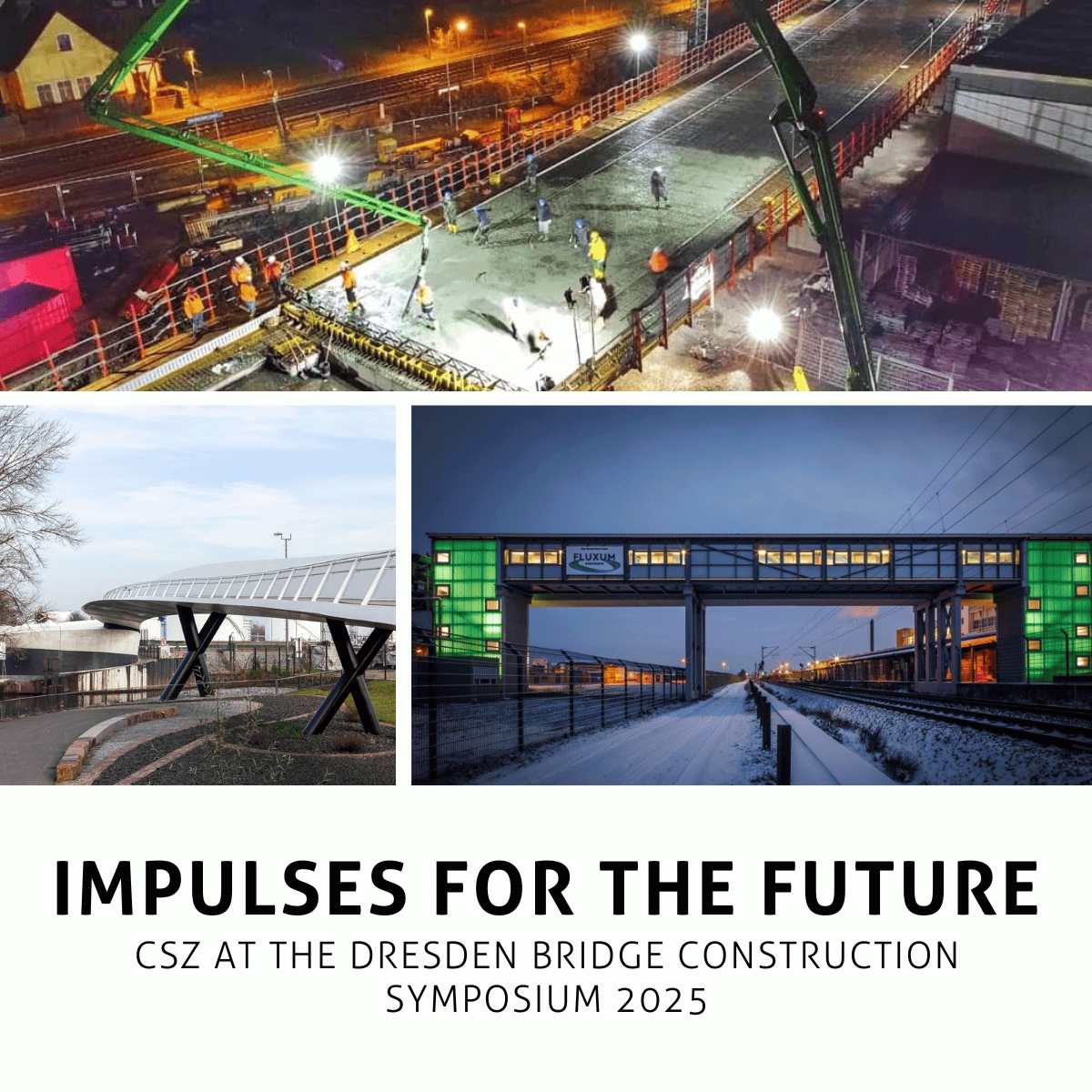The Dresden Bridge Construction Symposium 2025 not only offered a deep insight into current challenges in bridge construction, but also into innovative solutions and sustainable approaches. The focus was particularly on increasing the efficiency of projects and integrating new technologies and materials. CSZ draws valuable inspiration from the discussions and presentations to make future projects even more sustainable and resource-efficient.
4. What challenges in bridge construction were addressed at the symposium?
“The focus was on hydraulic engineering aspects, flow dynamics and flood protection, particularly with regard to more frequent flood events. The prioritization of renovation projects (paths, bridges, routes) was also discussed in depth. It is crucial to always keep an eye on the economic viability of both individual projects and the entire infrastructure.”
5. Were there any new ideas for increasing efficiency in bridge construction that are relevant for CSZ?
“The presentation of sample and type designs for several locations is particularly relevant for us. They enable a more efficient use of resources while maintaining high quality and adaptability to different conditions.”
6. How does CSZ deal with the issue of sustainability in bridge construction?
“Sustainability is central to our work. We focus on renovating existing bridges instead of building new ones whenever possible. Our bridge designs make it possible to separate building materials by type during demolition in order to promote their reuse and reduce CO2 emissions.”
7. Which projects at the Bridge Construction Prize 2025 inspired you in particular?
“The Chemnitz Viaduct, which was preserved as a landmark thanks to the involvement of the citizens, was particularly inspiring. We were also impressed by the Oder Bridge in Küstrin, which uses advanced technology to create a symbolic link between two countries. The New Rain Bridge in Roding impresses with its successful design and the optimization of material requirements – an example of modern, efficient bridge planning.”
Conclusion
The Dresden Bridge Construction Symposium 2025 provided CSZ with valuable impetus for future projects. The discussions about infrastructure, innovative materials and sustainable renovation approaches will continue to shape the company’s work. CSZ remains open to new developments and implements these findings to make bridges more efficient, sustainable and safe.










